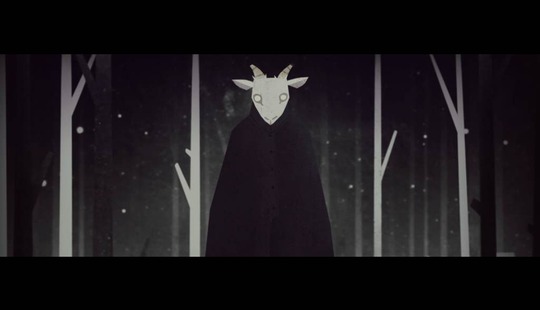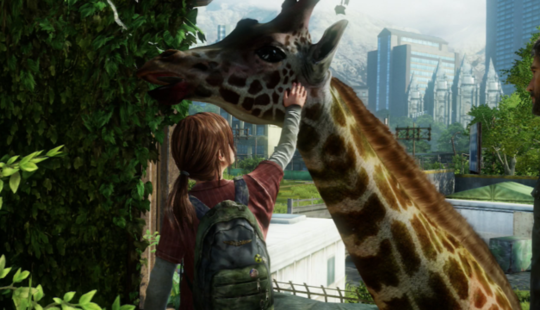The next is the now, but what’s really changed? Higher fidelities have yet to produce significantly greater gaming experiences – to look at the launch line-ups of both the PlayStation 4 and Xbox One, you could be well forgiven for delaying choosing to upgrade to either.
Which is precisely what I’m doing. I’ve had a little hands-on time with both, with mixed (first) impressions. I’m not surprised that Xbox One exclusive Forza Motorsport 5 is as accomplished as it is, and equally the delay of Sony’s Driveclub was surely only unexpected by those who’d not played it.
Dead Rising 3, Killzone: Shadow Fall, Knack, Ryse: Son Of Rome – these all have their strengths, some even remembering that the central premise of a “game”, definitively in the context, is to entertain. The blood can splatter a little bit more realistically, but if the method of spilling it hasn’t changed since gaming’s first forays into mainstream 3D, who really cares if something’s running 1080p or 720p?
These new consoles will, as the Wii U is perhaps just beginning to, likely show their hands with greater purpose, with a clearer sense of the possibilities to come rather than what’s immediately, commercially palatable, in a year or so. Maybe sooner – from previews to date, I know my interest has been piqued by 2014 PS4 exclusive The Order: 1886 (announcement trailer, below), a sort of Arthurian man-versus-monsters adventure set in an alternative-reality Victorian London.
The game looks to be a pretty linear affair, Gears Of War with better fog and different beasties, and I’m fine with that – with a limited amount of time to play with, outside of Real Life Commitments, I’m increasingly drawn to titles that don’t require 40-something hours, or more, to get the most out of. With this in mind, 2014 also holds a few other trump cards: there’s sci-fi survival horror in the shape of SOMA, coming to PC, Mac and (crucially, for the which-console-is-right-for-me sort) PS4, as well as the multi-platform, open-world, hack-everything (and still highly anticipated) Watch Dogs.
Another forthcoming multi-format release currently without a scheduled Xbox One port is Hyper Light Drifter, a gorgeous-looking 16-bit styled RPG. I appreciate that I just made a point of highlighting shorter, more one-way-forward structured games as a preference – but I’ll make a concession for something that tickles the nostalgia buttons as superbly as this Kickstarter-funded project. They asked for $27,000, and to date almost $650,000 has been donated. Commit a certain amount of cheddar and makers Heart Machine (aka Alex Preston) will send your copy in SNES-style packaging. Oh, be still…
On a Kickstarter-gone-retro tangent, Sega fans of a certain vintage may be interested in this gorgeous-looking retrospective of the Mega Drive, currently in production. It’s expected in June, so choose a pledge option while you can here.
But I digress, as the objective of this column is not to fill your minds with what’s to be, but rather what was. And 2013 has been as rich as any other year in terms of gaming highs. At least, at has been from where I’ve been sitting (in front of my telly, late at night, when the wife and kids are in bed). With this solo perspective in mind, please appreciate that I can only highlight what I have played.
I know (recently pushing games on the box again sort, with some success) Charlie Brooker is one of many singing the praises of Papers, Please, but as a non-PC user I’ve not played it. (My wife bought a Mac, so I sold our PC, simple as.**) Equally, I’ve not Gone Home in 2013. But the successes of these indie-developed titles brilliantly illustrates the closing divide between major studios turning out quarter-billion-budget blockbusters and the games equivalent of the cottage industry: you don’t need a team of multi-cultural developers and a pre-titles disclaimer to that effect to resonate with an audience.
That said, one of the greatest games of 2013 is Grand Theft Auto V (a video documenting many a way to die in it, above). Obviously. Of course it is. Have you played it? Quite a few people did. I don’t need to write the first-day sales figures out again, but for those right at the back who’ve only just got over the disappointment of the 32X: it did alright.
I play GTA V, more often than not, as a tourist of the world Rockstar has built. Its 2013 version of San Andreas is very different to the one realised in the 2004 iteration named directly after the fictional state, based on southern California. In some respects it’s not as ‘limitless’ – there was always the feeling, in San Andreas, of there being more out there, some new secrets to uncover. V opens every inch of itself up to the player at the outset, and it’s such a richly vibrant world, too – so much so that the main story missions can occasionally become annoying distractions from simply base-jumping from a tower block after half-inching a helicopter from the local hospital roof, and then landing on a motorboat before blasting straight off to a jet ski race. If you get bored playing GTA V, I don’t know if games are your thing.
Which is obviously a ridiculous thing to say: we’re all gamers, however we choose to present that through everyday behaviour and habits. Got Temple Run (2) in your phone? Scrabble? Snake? You’re a gamer. And while the contest between the Xbox One and PS4 plays out in advertising breaks most evenings, there’s an even more ferocious turf war going down every single day on the App Store: a place where only the brave come to chance their hand at something genuinely new, something that truly stands out beside all the tower defence games, infinite runners and Angry Birds updates.
Credit is due, and some, to Malmö-based developers Simogo – that’s Simon Flesser and Magnus ‘Gordon’ Gardebäck (see what they did, there?) – who’ve released two games for mobile devices in 2013, and both have been remarkable. Year Walk (terrifying goat man thing, below) emerged in February – a curious time to release a game set in the depths of a Scandinavian winter, just as the sun was beginning to make its presence felt in the Northern Hemisphere. It’s a small game – short, if you crack its puzzles instantly… but you won’t – but so wonderfully, wickedly formed that its eerie charms connect at first contact. Your player views the world – flat, yet layered in such a way that it feels as real as stepping out your own front door – from the first-person perspective, but moves like a side-scroller. Like a crab in the snow. Sort of.

I don’t want to spend too long going into detail on each of my year-best choices, so I’ll simply say: if you enjoy balancing cryptic puzzles with digit dexterity, and having the stuffing scared out of you at least twice per game, then download it. It’s brilliant. As is Device 6, by the same developer and a tough(er) one to explain. Like Year Walk, it’s a puzzle game – some stages can be solved quickly, while others really do require the retracing of steps several times. Each stage is mapped in words – the story is presented as text, but it rotates 360 degrees to match the direction the protagonist is walking. Ish. Again, it’s got its share of unsettling moments – a doll’s scream in particular sets my skin on edge thinking about it.
Simogo’s pedigree was right up there before these two games – they’re the team behind the super-fun rhythm-action game for iOS, Beat Sneak Bandit – but I’m pretty sure their stock is riding at an all-time high right now. Sticking to mobile, ‘casual’ games – not that the aforementioned two have anything casual about them – I’ve really been addicted to Impossible Road (main picture), which has been sold in some quarters as a Super Hexagon (featured in the last best-of article) for 2013. Which is maybe a bit unfair, as the just-one-more-go nature of Terry Cavanagh’s 2012 hit is probably yet to be bettered by anything on the App Store.
But Kevin Ng’s game – basically, you roll a ball down a path set in some sort of infinite void, until the ball falls off (it always falls off) and you start again – is certainly a quality way to kill time on Underground transfers. The soundtrack isn’t up to much on repeat plays, though – I’ve found Machinedrum’s Vapor City quite the appropriate accompaniment to the game’s clean lines and undulating rhythms. A game might last a minute, but it’ll more likely be over in seconds. At the time of writing my high score is a measly 75 (gates passed) – but that I’m determined to break 100 is a sign of a game that’s got under the skin. (I guess I should watch the video below.)
And getting right into the heart of many a player in 2013 was The Last Of Us. Naughty Dog’s PS3 exclusive that wasn’t Uncharted took all the plaudits it could carry on its June release, and I can’t argue with any of them. Third-person gameplay makes it an easy one to pick up and run with from the start – except, you can’t run at the start. That’s part of how this game gets to you. It offers no escape. No happy endings. And to say anything more there would almost certainly necessitate an almighty spoilers warning at the top of this piece.
The Last Of Us is bleak. (Okay, sometimes it’s not… the giraffes, pictured below, anyone?) It’s hard. And brutally so. It’s a game that only holds your hand through its barely surmountable odds when it’s absolutely necessary – it doesn’t utilise a skip function when the player is repeating the same section a few times, as GTA V does (wisely acknowledging that not everyone picking it up is going to be able to handle its fiddly aircraft) – but somehow it reluctantly grants progress. Or, at least, that’s how I felt: that this game was responding to how I was playing it. I think that’s entirely in my head – I guess I just got better at said sequences (seeing the same throat ripped out six times in a row will change any man). But know this: if you can breeze through the Call Of Duty: Ghosts campaign (and you will), this is roughly a hundred times more challenging.
The story of The Last Of Us is great, too – and clever with it, presenting perhaps the only barely believable ‘zombie’ outbreak in gaming’s 2013 courtesy of a loose grasp on one of the natural world’s most striking survival-cum-reproduction mechanisms. Also up there in terms of its story is BioShock: Infinite, which I wrote about at no little length in April, in a piece also featuring an interview with the game’s creator, Ken Levine. Some critics seemed shocked at the graphic violence of the game: but, the way I see it, when you’ve a protagonist as desperate, from the outset, as Booker DeWitt most certainly is, a little claret is surely expected.

Like its undersea-set predecessors, Infinite is a first-person shooter. Unlike those games, it’s one where the layers of meaning in each scene, each interaction with companion NPC Elizabeth, takes on different relevance depending on the play through. Once you know the end – and the Internet had no shame in spilling it through an innumerable amount of analysis pieces (it was gaming’s very own Breaking Bad moment of the year) – what comes before it can be unpicked myriad ways. Or maybe I’m just over-thinking things, as the gameplay itself is functional over fully engaging, allowing the story to dominate the lasting memories.
A game that really did impress on how it played, rather than what was said (a bunch of gobbledygook, mostly), was Metal Gear Rising: Revengeance. In one fell swoop Konami utterly destroyed the stealth factor of its Metal Gear Solid series, taking the play-any-way mentality of Guns Of The Patriots and refining it into a purely slice-the-shit-out-of-everything romp. And what fun. You’re a ninja cyborg dude with a massive great sword and a wonderful 360 degrees of flexibility regarding how you dismember an enemy. Get angry and you can activate Ripper Mode: the name says everything you need to know about what happens next.
As gloriously, ridiculously entertaining as MGR:R is, though, it’s another game that clued up to its players’ varying abilities and embraced absolute beginners to its cavalcade of gleeful carnage. At normal difficulty, learning how to parry is a must – it opens enemies’ defences, and more importantly keeps you alive. Lower the difficulty and the exacting nature of this system is toned right down: now, the player is relatively free to hack that helicopter to pieces with little fear of being obliterated in the process. It’s a hardcore game for the everyman, the most fun without compromising the quality some out there look for in their purchases: that real, grind-it-out challenge.
Another winning factor in the make-up of MGR:R (gameplay video, above), for me, is that matter of time. It is a short game; likewise, something like BioShock Infinite can be played through in a weekend. I thought, when I bought it, that Ni No Kuni might make this year-end mixer. But such are the hours necessary to properly crack it that I am nowhere close to seeing its (really, quite beautiful) story out. So far, so brilliant, though, so perhaps it does deserve a hearty handshake of congratulatory appreciation. (Of course, you might not consider the Level-5/Studio Ghibli-developed RPG to be a game of 2013, as its PS3 incarnation first came out in Japan back in 2013. The quality of the localisation was worth the time, mind.)
Let’s close this out. I’ve not ranked the above and, in that spirit, here are some more games I have really enjoyed in 2013 (based on the notes that I made in my phone across the last few months of properly trying to think this stuff through)…
The rightly rebooted Tomb Raider; the too-beautiful racer Grid 2; the emotionally stirring (mostly) subterranean shooter Metro: Last Light; the terrifically boisterous and addictive platforming silliness of Rayman: Legends; Quantic Dream’s flawed but affecting interactive drama Beyond: Two Souls; and, finally, the nautical thrills to be found in Assassin’s Creed IV: Black Flag. I’ve been well into colons this year, clearly.
That these games have come so late in the cycle of current-gen (last-gen?) hardware is illustrative enough of the fact that it takes substantial time for developers to truly get the best out of the consoles they’re working on. Think back to the early days of the Xbox 360: at launch, it had Call Of Duty, FIFA, Need For Speed. The Xbox One, right now, has: Call Of Duty, FIFA, Need For Speed. New consoles haven’t been sold, initially, with talk of ‘bits’ or any other hardware terminology for a couple of generations now – they’re introduced with familiar franchises. Inarguably, the greatest creativity comes later.
So here’s looking forward to what the Xbox One and PS4 are achieving in, say, five years, let alone 12 months. Sure, they’re doing nothing special in the pre-Christmas ship-‘em-fast rush. But the now that comes next is unwritten and, on precedent, incredibly exciting.
(** Yes, I know, these games are available for OS X, too. I still haven't played them yet.)
Related
1) More Savage Pixels can be found here
2) DiScuss games of the year and more over on our social board
3) If you prefer, you can discuss this article over on our Facebook






















